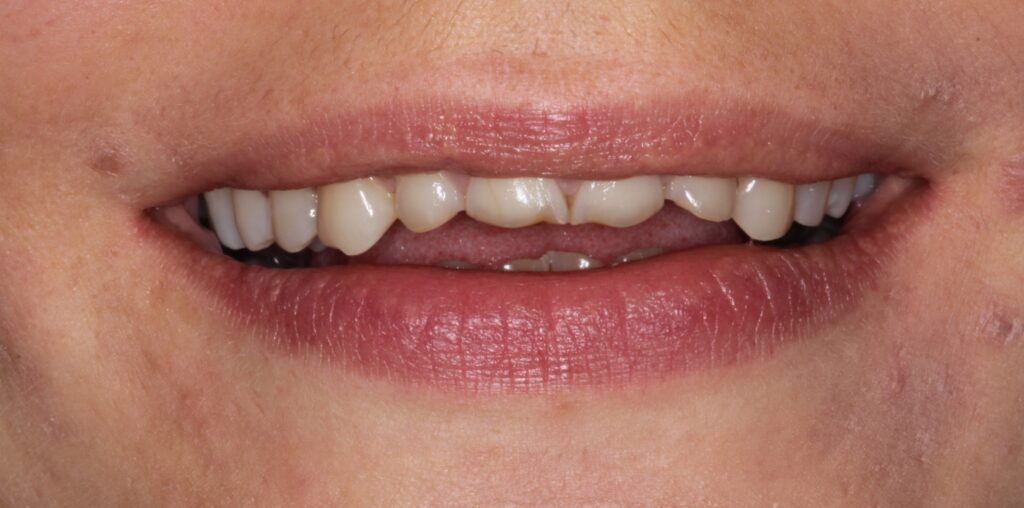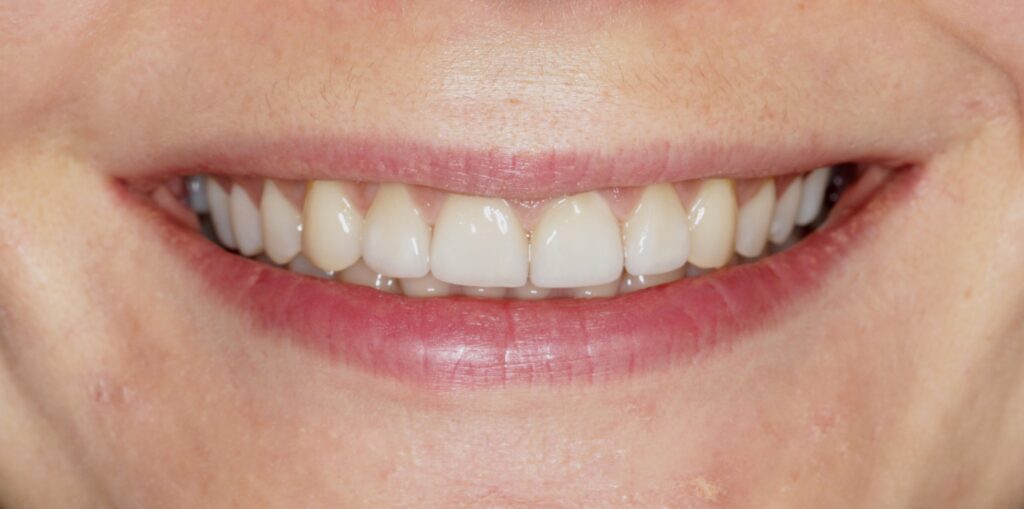Teeth veneers
Prices, placement, indications
Dental veneers are thin ceramic or resin films permanently bonded to the tooth surface. They can be used to modify all tooth characteristics, accurately reproducing the appearance of natural teeth. To the naked eye, veneers are indistinguishable from natural teeth.
Dental veneers at CHD
The dentist will systematically carry out a complete check of your mouth to ensure that there are no problems or contraindications to the placement of veneers.
We would like to thank RTS for recognising our expertise and know-how in aesthetics in their report on dental veneers.
See the report
Découvrez ce soin en vidéo
À noter que selon les cas,
Une fine couche de tissus dentaire est délicatement retirée afin d’avoir la place pour venir coller la facette dentaire en céramique.
Enfin, celles-ci sont réalisées par des maîtres céramistes en Suisse et plus précisément à Meyrin.


Visit our library of
Rates
| Dental veneers | ~1100/veneer |
Exact quotation before treatment.
*You can also choose to pay in installments.
Fair & transparent prices
We strive to maintain unbeatable value for money: reasonable prices, which have not changed since 2016, for quality of care that has earned us numerous awards:



Advice
Once your veneers have been fitted for good, all that’s left for you to do is proudly show off your magnificent smile at Montreux Jazz! The session ends with tailor-made advice on how to care for your dental veneers.
EVERYTHING you’ve always wanted to know about dental veneers in one video:

Forget crowns, which are too expensive and far too invasive for dental tissue. In most cases, a composite resin or onlay will suffice.
Dr Thomas, Dentist, CHD Clinics Lausanne and Yverdon – Nord Vaudois.
Next appointment
The number of sessions varies according to the complexity of the case and the number of trials required before the final aesthetic is validated, and is usually limited to 4 appointments.
Our dental clinics
Find out more about dental veneers
What is the price of a dental veneer?
The price of a dental veneer depends on its quality and the material used:
A ceramic dental veneer costs 1,200.-CHF.
This price includes the dentist’s service, the work of ceramists at the Meyrin laboratory, and the temporary resin veneer.
A composite dental veneer costs around 450.-CHF.
Similarly, this price includes the laboratory work by the master ceramists at our own Meyrin laboratory and the temporary resin veneer.
However, it is important to understand that the price of a veneer also depends on the amount of laboratory work required and the clinical situation.
The purpose of a veneer is to accurately replicate the natural characteristics of a tooth while improving its aesthetic appearance. In some cases, it may be necessary to add imperfections that give the tooth a natural touch and make it entirely unique. This type of work requires extremely precise and time-intensive effort by the master ceramists, which results in a higher laboratory cost.
Conversely, in the case of multiple veneers, the cost per veneer tends to decrease.
In any case, it becomes nearly impossible to distinguish between a natural tooth and a veneer if it has been properly crafted.
Why get dental veneers?
Veneers are useful for several possible modifications:
– Changing the alignment of your teeth
– Correcting overlapping
– Modifying the shape of teeth
– Closing gaps between teeth (diastema)
– Covering permanent stains or damaged appearance of teeth
– Achieving straight teeth without orthodontic treatments like Invisalign or braces
Dental veneers address these aesthetic and functional concerns in just three sessions, providing a definitive solution without the need for longer treatments like orthodontics.
They also allow for avoiding an “artificial” smile if the patient desires, tailoring the teeth to match the context of their smile and face.
It’s important to note that not all teeth necessarily need veneers to transform an entire smile. Usually, only 4 to 6 veneers are enough to modify a complete dental arch, as the first 6 front teeth define the aesthetic of a smile.
Most patients, therefore, opt for 4 or 6 veneers, and dentists ensure an ideal integration between natural teeth and ceramic veneers.
Are there any contraindications to getting veneers?
There are no absolute contraindications to veneers, but certain factors could raise concerns about their implementation or long-term durability. These include:
Inadequate or insufficient oral hygiene:
Covering the teeth with ceramic does not eliminate the need for proper dental and gum hygiene. It is still possible to develop inter-dental cavities at the margin between the veneer and the tooth, and gum inflammation (gingivitis) can occur if brushing is not done regularly
A traumatic or extreme occlusion (bite alignment)
This can complicate the placement of veneers. In such cases, a short orthodontic treatment lasting 3 to 6 months may be necessary to address the issue before considering veneers.
Excessive teeth grinding
If teeth are severely worn due to intense grinding, the dentist might recommend other stronger options like crowns instead of veneers.
Additionally, veneers cannot be placed without first ensuring the mouth is healthy by treating cavities, infections, or gum inflammation.
What is the procedure for placing a dental veneer?
A dental veneer is a thin layer of ceramic (porcelain) bonded to the outer surface of the teeth.
Since the veneer cannot add extra thickness to the tooth’s outer surface, it is necessary to “prepare” the tooth by removing a thin layer of enamel.
Specifically, this involves polishing the tooth or minimally invasive shaping to a depth of about 0.7mm, or up to 1mm in more significant cases.
After preparation, a 3D scanner impression is taken and sent to the laboratory.
A temporary veneer is then made to cover the prepared tooth and begin the aesthetic process. This is the stage for purely aesthetic trials of tooth shapes and lengths, where the patient and dentist discuss and “test” different options to best integrate them into the patient’s smile and face.
This artistic phase is crucial for validating the final aesthetic project. The patient will know the final smile’s appearance in advance, as the temporary veneers will be scanned for creating the definitive ones.
There is no risk that the patient will not be 100% satisfied with their final smile since it will have been approved beforehand during the temporary veneer phase.
Once the temporary veneers are approved, a duplicate is made to create the final ceramic veneers.
These are placed in the next session, and an X-ray is taken to ensure there are no excess adhesives and to verify their adaptation to the natural teeth.
A final check-up is scheduled about one month later, followed by a hygienist appointment to optimize their cleanability and determine the best brushing technique for the patient.
Are dental veneers covered by insurance?
Dental veneers are not covered by basic health insurance (Lamal), like most aesthetic treatments.
If you have supplemental dental insurance, coverage will depend on your plan and deductible. Don’t hesitate to contact your insurer for more information!
However, there are specific cases:
– In the event of an accident where a tooth is broken and requires a ceramic veneer, the accident insurance will cover the cost.
– If your teeth are damaged due to medication, a malformation, or a genetic issue affecting enamel or dentin (the tooth’s second layer), your dentist may complete a form for potential insurance coverage.
In summary, while veneers have both aesthetic and functional purposes, they are usually at the patient’s expense.